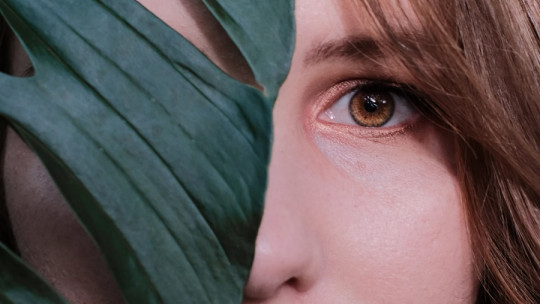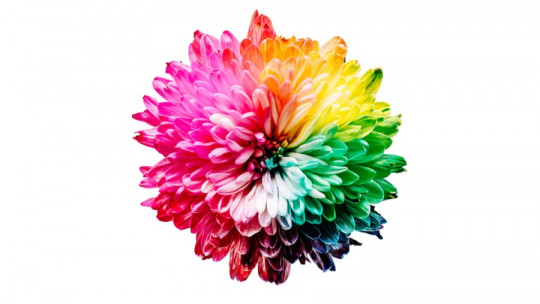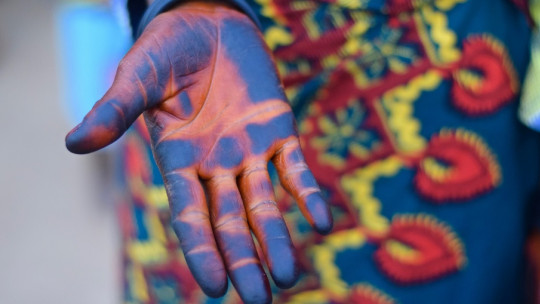
Let’s observe a garden, a park full of green or a forest in broad daylight, in spring. The green of tree leaves, grass, moss and lichens… It is something that has always inspired us and that we link to life. And the color green has almost always been present in the human world, being one of the most common colors in the natural environment and one that has accompanied us the most in our evolution.
This fact has caused it to acquire a series of connotations and symbolisms throughout history, to the point that this color has come to acquire a symbology and provoke a series of responses in us. This is fundamentally due to the psychological meaning that we have given to this color and its symbolism. It is about this meaning of the color green that we are going to talk about in this article.
Green as a color
Although we generally talk about green and the rest of the colors as something palpable, which is there and is part of the nature of objects, the truth is that color is nothing more than the perception of the refraction and absorption of light by these, being therefore a product of our perception,
In the case of green, we see this color when our eyes capture wavelengths between 496 and 570 nm. Between these wavelengths we perceive various shades of this color, with different types of green existing. Along with red and blue, green is a color for which our eyes have a specific type of cone.
Although biologically and also according to the additive synthesis model of color, green is one of the primary colors, yellow being secondary and the product of the mixture of green with red, the subtractive synthesis model has traditionally been followed in which is considered that this color was secondary and the product of the mixture of blue and yellow (which is why most children have been taught this way).
What does the color green mean?
As with the rest of the colors, green has its own symbology acquired through its association with elements of the same color and based on this it has also generated a psychological meaning that is studied by color psychology. Specifically, it is related to nature and vegetation, from which multiple symbolisms are extracted.
In this sense, green usually has a positive impact on the human psyche. a series of tremendously positive connotations. Firstly, it is linked to birth, life, strength and energy. It is a color deeply associated with spring and linked to fertility and growth, something that makes it something related to the idea of youth. In this sense it is also a symbol of innocence. Another element related to its link with growth occurs economically: it is a symbol of wealth.
The color associated with nature is also associated with healing and healing, with freshness. Furthermore, as tradition says, green It is also the color of hope, optimism and good luck. Also with naturalness, the search for pleasure and vigor. Finally, it is one of the colors most linked to the idea of balance, serenity and calm, as well as the spiritual.
Nature, which green usually symbolizes, is seen as beautiful and full of life. But it also has its dark side: it is also full of death, blood, persecution and cruelty. And in this sense, the symbolism of green also incorporates these negative elements. Among them, the association with poison and toxicity stands out, probably derived from the coloration of many plants and animals (for example snakes and frogs) and the use of green dyes made of copper that turned out to be poisonous. It is also related, and is probably its best-known negative association, with envy.
Death, horror and manipulation are concepts linked to this color, especially in darker tones and when associated with black. The same goes for betrayal, including concepts like infidelity. Light green too It is associated with immaturity and naivety, as counterparts to the aforementioned connection with youth, and to the excess of the search for pleasure. Also to vanity and both strength/authority and weakness. Socially, it has also been identified as the color of the bourgeoisie.
Psychologically speaking, this color has been associated with characteristics such as calm and affection, as well as with moral demand, hedonism and joviality. An association with what is sociable and balanced is usually observed.
On the other hand, adaptability (in extreme cases, indecision and conformity) and inner peace are linked. However, it is also associated with possessiveness, resentful rumination and the aforementioned envy. Also to cunning, which in a negative sense can also be linked to manipulation. The color green too usually generates calm and relief, allowing you to calm down, which in turn improves emotional stability and favors the use of reason and logic. It is also often linked to optimism and vitality, improving energy and motivation levels and helping to maintain hope. It is also linked to a sensitive and open-minded personality.
How is it used in society?
The properties and symbolism of green make it an ideal color for certain practical uses. Its links with nature and recovery make it suitable for environments in which a search for balance and comfort is required, as well as for healing and recovery of the state of mind.
Related to healing, among the meanings of green is also the increase in defenses and preservation of motivation. It is also useful in meditation. In addition, its association and relaxing effect has caused the clothes of doctors and surgeons to be greenish in color.
Its connection with tolerance and flexibility means that it can be used in the painting of rooms where you want harmony to exist and anxiety and stress levels to be reduced, both in homes and offices. In marketing and advertising, it has been seen that green favors action, and also It is associated with recycling and respect for the environment as well as with the idea of freedom and stability. That is why it is used in the design of a large number of products. In the case of food products, it is used due to the link between natural and healthy.
Cultural variations
In addition to the previously mentioned associations, the color green has received different considerations in different cultures or even through different histories.
In most of Europe green is a symbol of good luck, energy, rebirth and nature. It is associated with Christmas and in countries like Ireland with the Catholic religion. It was considered the color of the bourgeoisie, due to the difficulty in achieving said pigment. In the past, however, evil used to be represented with this color. It is also usually linked to envy and jealousy, as well as weakness.
For Muslims, green is a sacred color, associated with the prophet Muhammad. It is also a symbol of strength, luck and prestige. In China and the rest of the East it implies hope and fertility, as well as virtue and good intentions. Traditionally jade was used to make gifts and offerings). However, it has also sometimes been associated with shame and infidelity.
The life-death duality linked to nature and the color green has been observed by multiple cultures and societies. For example In ancient Egypt the god Osiris had skin of this color, being a deity linked to the judgment of souls and rebirth. For pre-Columbian peoples it symbolized immortality, fertility and power and they used jade in the making of funerary masks. In some South American countries where jungle abounds, however, green is much more associated with death.








